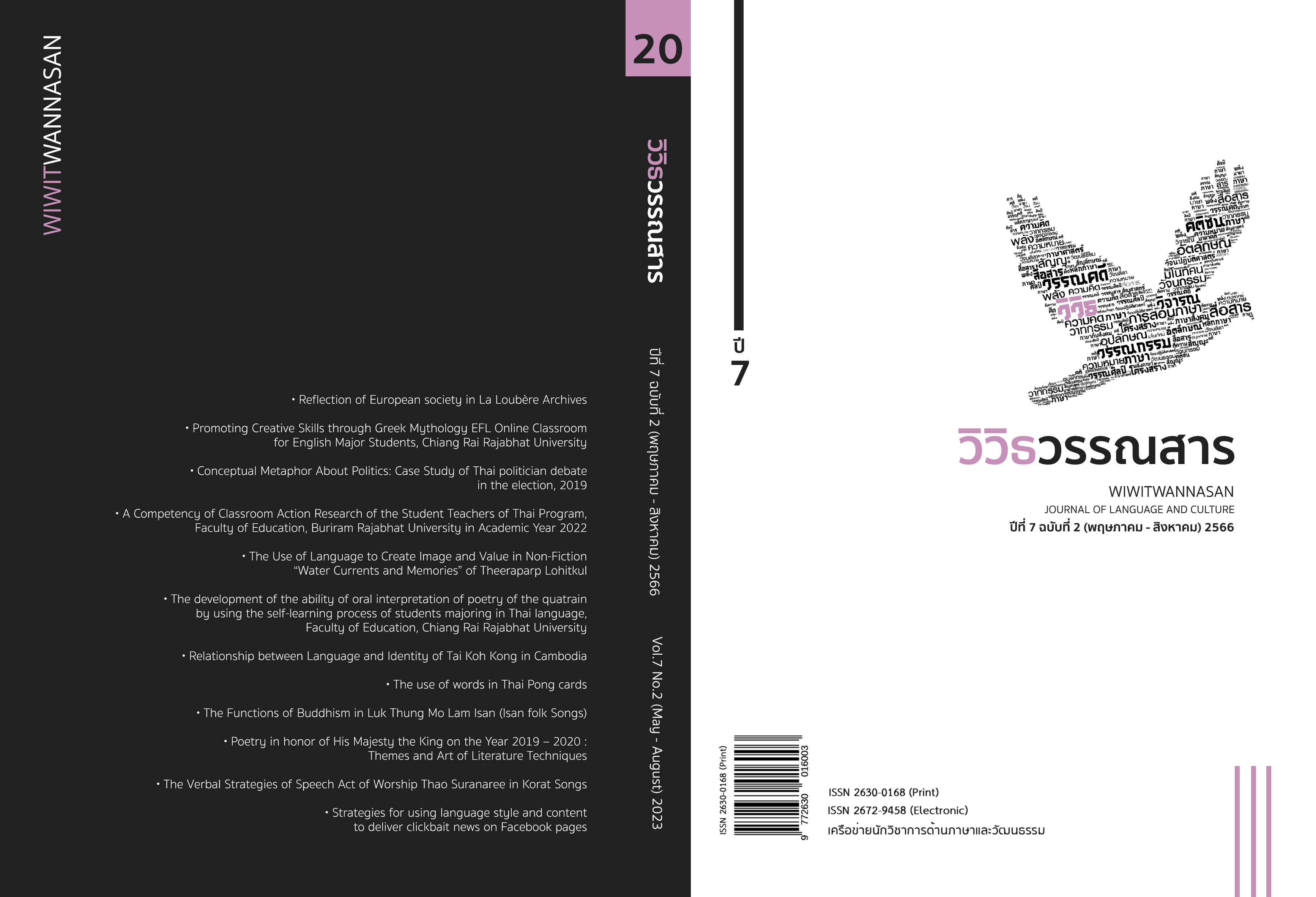The Use of Image Language and Value in Non Fiction “Sai Nam Lae Khwam Song Cham” of Teerapap Lohitkul
Main Article Content
Abstract
This research article aimed to study language used to create imagery and value in Non Fiction “Sai Nam Lae Khwam Song Cham” of Teerapap Lohitkul. The result of the study in linguistic elements used to create imagery are rhythm, words variation for symptom or movement, shape, color, sound, touch, scent, light, compound word, colloquialism, repetition, new word formation and antonyms words. Figure of speech used are: similar, personification, onomatopoeia and symbol. The value aspects show current social and problem situations, human related problems, tips of ideas and reflect writer’s ideology.
Article Details

This work is licensed under a Creative Commons Attribution-NonCommercial-NoDerivatives 4.0 International License.
Copyright is that of the journal any reproduction must be permitted by the editor of journal
References
Chaisin, R. (1994). Isan literature. Loei: Rungsang Press biz co. ltd. (In Thai)
Lohitkul, T. (1996). Leads and Memories. Bangkok: Praew Publishing. (In Thai)
Manlikamat, K. (1975). Literature Review. Bangkok: Ramkhamhaeng University Press. (In Thai)
Niannatsakun, B (2001). Nature imgery in th poetry of Ujeni, Naowarat Pongpaiboon and
Paiwarin Khaongam. (Masteral dissertation). Chulalongkorn University.
Phanthumsut, S (2001). Thai language 6 : teacher writing. Sukhothai Thammathirat University.
Phongpheng, W. (2004). The language of imagery in King Chulalongkorn's Klai Ban. (Masteral
dissertation). Chulalongkorn University.
Samaphan Ongkon Phuea Phatthana Nangsue Lae Kan An (1 June 2011). Young –adult fiction.
http//www.ryt9.com.
Suwanchomphu, C. (2000). Thai Language for Communication. Silpakorn University.
ThongSian, T (2008). An Analysis of Dan Aran Saeng Tong's Novel Writing Techiques.
(Masteral dissertation). Naresuan University.


